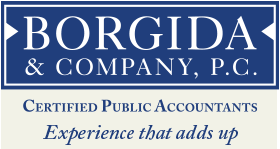
1) Decrease in Income Tax Rates
The 2018 income tax rates are as follows:
Single Married Filing Joint
10% up to $9,525 Up to $19,050
12% $9,526 to $38,700 $19,051 to $77,400
22% $38,701 to $82,500 $77,401 to $165,000
24% $82,501 to $157,500 $165,001 to $315,000
32% $157,501 to $200,000 $315,001 to $400,000
35% $200,001 to $500,000 $400,001 to $600,000
37% over $500,000 over $600,000
Overall income tax rates have come down. The highest stated rate was 39.6%, now it is 37%. These tax cuts are scheduled to expire after 2025. The decline in tax rates does not guarantee that everyone will get a tax break. Some deductions have been eliminated or modified. This could cause some taxpayers to pay more income tax.
2) Increase in the Standard Deduction and Removal of the Personal Exemption
Taxpayers can take the standard deduction or itemize their deductions, whichever is greater. The most common itemized deductions are mortgage interest, real estate and state income taxes, donations and medical expenses.
The standard deduction has been increased in 2018 to $12,000 for individuals and $24,000 for married couples filing jointly and $18,000 for head of household. For taxpayers over age 65, blind or disabled there is an additional $1,250 added to the Standard Deduction. This is $1,550 for single taxpayers.
The 2017 personal exemption was $4,050 each for you, your spouse and your dependents. There will be no personal exemption in 2018 and going forward. The removal of the personal exemption may cause some families to have a higher income tax rate.
3) Limitation of the State and Local Income Tax Deduction
The state income tax, real estate tax and car tax deduction will be limited to $10,000. This will be a challenge for many Connecticut taxpayers. The increase in the standard deduction, along with the cap on the state and local income tax deduction, will likely have many taxpayers taking the standard deduction and not itemizing their deductions.
There is also the elimination of other itemized deductions:
• Casualty and theft losses will only be allowed for losses incurred in Federally – declared disaster areas. This is a setback for Connecticut taxpayers that have been affected by crumbling foundations. This has not been declared a Federal disaster area and currently would allow no deductions in 2018.
• Any non-reimbursed employee expenses and investment expenses.
4) Limitation on Mortgage Interest Deduction
Currently taxpayers can deduct mortgage interest on up to $1 million of mortgage indebtedness. Additionally, interest can be deducted on $100,000 of home equity line of credit. With this legislation, beginning in 2018 for new mortgages, the amount of interest is limited to $750,000 of mortgage indebtedness. There will no longer be a deduction for interest on home equity lines of credit.
5) Removal of the Alimony Deduction
Alimony was income tax deductible by the payor and taxable to the recipient. Alimony will no longer be income tax deductible or includable in income by the recipient. This provision takes effect for divorce and separation agreements signed after December 31, 2018.
6) Increase in the “Kiddie Tax”
Before this legislation, the “Kiddie Tax” applied to the unearned income above $2,100 of children. They would be taxed at the parent’s income tax rates. Beginning in 2018, the “Kiddie Tax” will be applied using the tax brackets for estates and trusts. The tax bracket for estates and trusts are very compact. The maximum tax bracket of 37% applies to income over only $12,500. Contrast this with the maximum individual of a married couple filing a joint return of income over $600,000.
7) Increased Child Tax Credit
Currently, taxpayers with children may eligible for a child tax credit of $1,000. The child needs to be under age 17 and there are income limitations. The credit is available for taxpayers filing marred filing jointly if their adjusted gross income is $110,000 or less. This child tax credit has been increased to $2,000. Additionally, the income level for eligible taxpayers has been increased to $400,000.



tom, thanks for the heads=up i’m feeling pretty scrambled up by the upcoming possibilities and hope to schedule a get together with you before you get toooooo busy karl